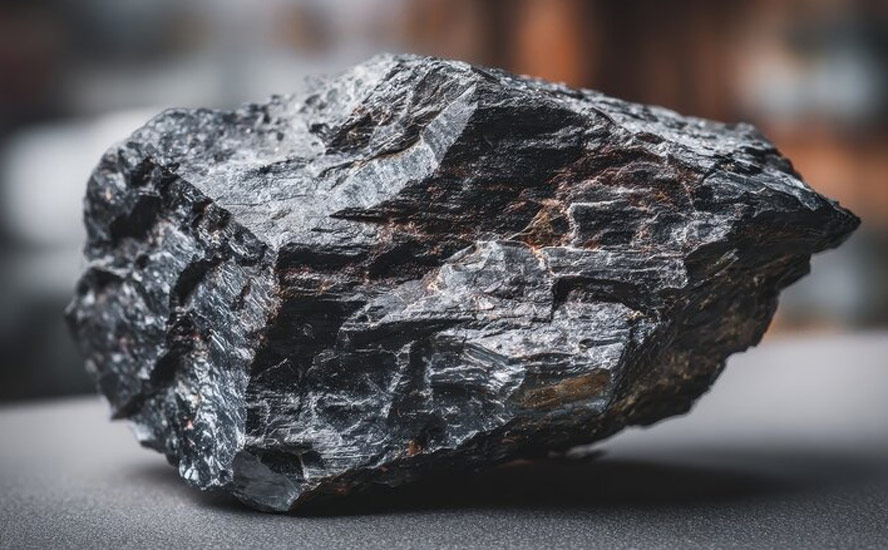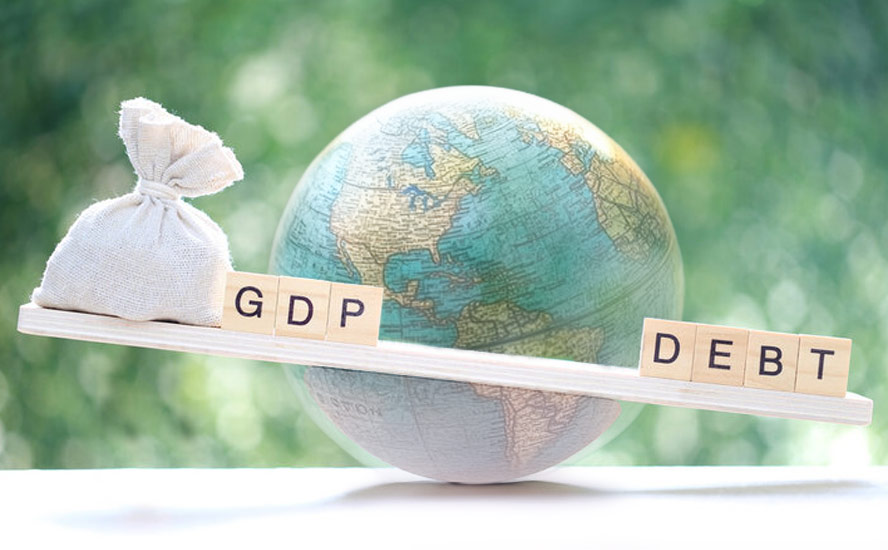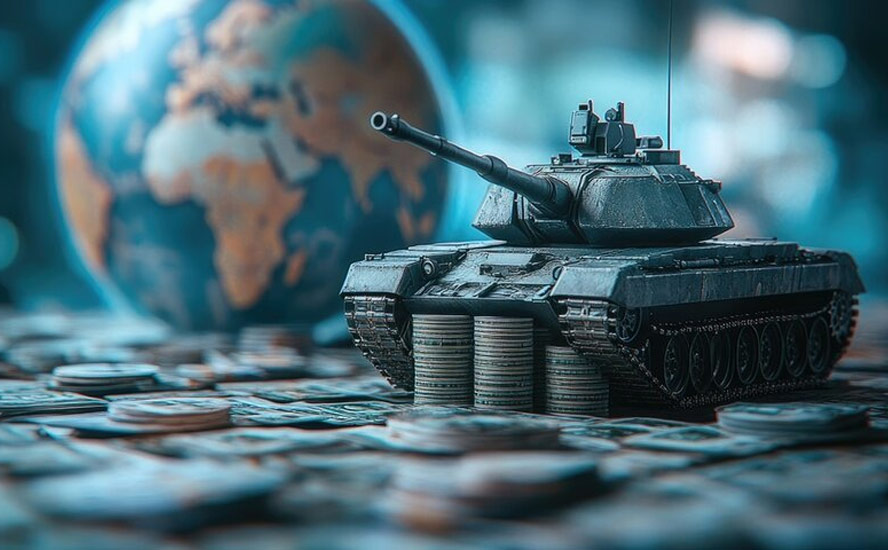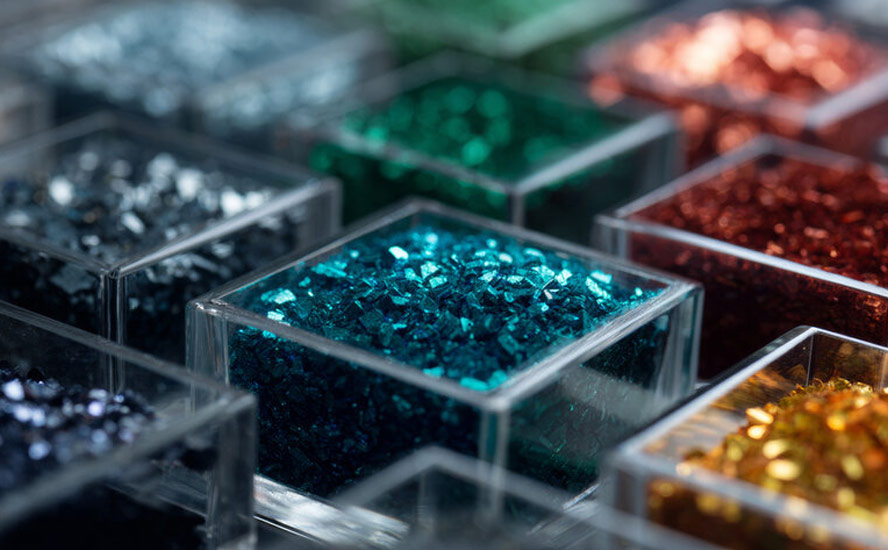Why America’s critical minerals strategy is doomed to fail

2019.09.28
Donald Trump started a trade war with China thinking, obviously, that his administration could win it.

Through a combination of hubris and ignorance, this president failed to see America’s soft underbelly, its Achilles heel.

The answer is the country’s heavy reliance on foreign supplies of critical minerals – the raw materials it needs to become a leader in high technology, transportation, energy and defense. Materials like lithium, rare earths, cobalt and graphite.

For years the United States and Canada didn’t bother to explore for these minerals and build mines. Globalization brought with it the mentality that all countries are free traders, and friends. Dirty mining and processing? NIMBY. Let China do it, let the DRC do it, let whoever do it.
China recognized opportunity knocking and answered the door, seizing control of almost all REE processing and magnet manufacturing, in the space of about 10 years.
When the Chinese placed restrictions on rare earth elements in 2010, in reaction to a territorial dispute with Japan, prices of the materials used in a number of energy and defense-related applications skyrocketed. Good for REE miners, bad for end-users.
Then, earlier this year, as part of its trade war strategy, China raised the prospect of cutting exports of the commodities that are critical to America’s defense, energy electronics and auto sectors.
“United States, don’t underestimate China’s ability to strike back”, the official ‘People’s Daily’ newspaper stated. “Will rare earths become a counter weapon for China to hit back against the pressure the United States has put on for no reason at all? The answer is no mystery,” it added in an apparent reference to the United States blacklisting large tech company Huawei for reasons of US national security.

Suddenly, the once-remote possibility of using critical metals like REEs, as pawns in the trade war, became more likely. But it’s more than rare earths. The US is dependent on foreign countries for over 20 critical metals, including battery metals used in electronic devices like cell phones and electric vehicles.

Without a reliable supply chain, a country must depend on outsiders. This gives foreign suppliers incredible leverage over the United States. There is always the possibility of slowed flows or bans on strategic materials, due to politics or trade disputes.
The Trump administration recognized this when the president issued an executive order in December 2017, instructing his government to devise “a strategy to reduce the Nation’s reliance on critical minerals” that are largely imported.
“The United States must not remain reliant on foreign competitors like Russia and China for the critical minerals needed to keep our economy and our country safe,” Reuters quoted President Trump saying. The directive was a response to the US Geological Survey’s first assessment of US critical minerals since 1973. Its report concluded that the US relies on China for sourcing 20 out of the 23 minerals deemed critical for US national security and the economy.
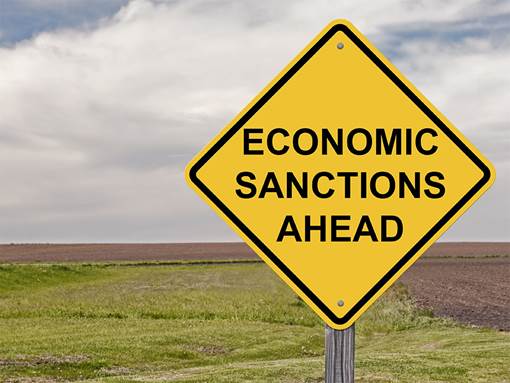
If China were to suddenly refuse sale of any of these 20 metals the US deems critical to the economy or defense of the nation, such as manganese needed to make steel, or rare earths used by the Military, the US economy and its defense capabilities would be in serious trouble.
Included on that list are the building blocks of the new electrified economy, including lithium and rare earths. China has a stranglehold on both of these metals, meaning it can use them as a cudgel in trade talks with the United States.
There are a few different ways the US could meet this threat of foreign countries restricting, or embargoing, critical minerals. One way is to encourage the exploration and mining of these metals, in the United States or Canada.
North America is well endowed with huge, quality rare earth deposits, enough to supply us with decades and decades of production. What we lack is processing and larger-scale manufacturing. But we have a ready supply to meet an admittedly smallish market (the US Military uses about 500 tonnes) and REE processing has already started happening outside China:
- Mountain Pass in California will start processing REEs by the end of 2020.
- Lynas signed a joint venture agreement with Blue Line Corp. to build a rare earths processing plant in Texas.
A second way would be to identify countries that are friendly to US interests, and invite them to join a US-led “critical minerals consortium”. Members could include Canada, Mexico, Chile, Argentina, Peru – all countries rich in mineral wealth the US could sign offtake agreements with. We’ll return to this idea further down.
The third way is what the US actually did: Form a group of countries to strategize about critical minerals, but invite all the wrong countries to the table.
ERGI: a bad idea
The Energy Resource Governance Initiative (ERGI) was created in June as part of a government-wide action plan to reduce US reliance on imported critical minerals.
Led by US Secretary of State Mike Pompeo, “ERGI promotes sound governance and resilient supply chains in the energy minerals sector. Through this initiative, the U.S. Department of State’s Bureau of Energy Resources (ENR) engages countries to advance governance principles, share best practices, and encourage a level playing field,” reads a Sept. 26 press release.
That sounds pretty bland, but what is interesting, and disturbing, is the ERGI’s mandate of sharing mining expertise with countries in the group. So, the United States is going to help countries like the DRC, Namibia and Brazil – all of which have been courted by and “married” to China through numerous mineral offtake agreements and loans – to discover and develop mineral deposits of lithium, cobalt and copper, presumably so they can sell more of said minerals to their lead benefactor, China!
In exchange, these developing (ie. poor) countries accept China’s offer to build hundreds of billions worth of infrastructure, thus bringing them closer to Beijing and drawing them further away from the United States.
So far nine countries have joined the US: Australia, Botswana, Peru, Argentina, Brazil, Democratic Republic of the Congo, Namibia, the Philippines and Zambia.
To see how wrong-headed the ERGI group is, as currently comprised, let’s take a few examples.
Australia is certainly a mining nation, with ample supplies of gold, rare earths, iron ore and coal, but the logistical challenges of shipping ores to the United States are, to put it mildly, prohibitive. That’s probably why Australia ranks as America’s 24th largest trading partner in goods, with just $35 billion in two-way trade conducted in 2018. Of the $10 billion worth of Australian imports, none were minerals. The top two imported goods were beef and pharmaceuticals.
In contrast the US did $659 billion in goods trade last year with China, its largest trading partner.
Basketcase Argentina
Argentina has an abundance of lithium, gold and silver, but its economy is in ruins. The country has one of the world’s highest inflation rates, 22%, and its economic growth shrunk 5.8% in the first quarter. A recent poll, showing President Macri is likely to lose the October election, resulted in the peso crashing to a record low. Argentina is also heavily indebted; over the last 60 years the IMF’s loans have gone from hundreds of millions to the billions, with the International Monetary Fund agreeing to a $50 billion loan in 2018.
In early September the government restricted foreign currency purchases in an effort to stabilize markets, following the currency’s fall to 60 pesos per US dollar.
Most countries on the ERDI list are deeply enmeshed with China, which has already inked numerous offtake agreements to supply it with critical and other metals.
In 2017 Shandong Gold partnered with Barrick, the world’s biggest gold producer, to purchase a 50% stake in the Veladero gold mine on the Chile-Argentina border. The $960 million deal included Shandong, one of China’s top gold miners, studying the possibility of building the massive Pascua Lama gold deposit Barrick has been trying to develop on the same border. The Chinese firm could also work with Barrick to explore other mines in the El Indio gold belt of Chile.
More recently, in August China’s Ganfeng Lithium raised its stake in the Cauchari-Olaroz lithium brine project in Argentina to 50%, in a $160 million deal with Chilean state lithium miner SQM. The JV partnership with Lithium Americas plans to start production in 2020.
Corrupt Brazil
Brazil, one of the best mining jurisdictions with a wealth of minerals including iron ore, gold, copper, manganese and bauxite, should be tightening control of its mineral riches as it struggles through a major recession fueled by a corruption scandal. Instead the country has opened its doors to foreign investment: namely, Chinese.
According to Dealogic, Chinese M&A of Brazilian companies totalled $10.8 billion in 2017 and $11.9 billion in 2016. Chinese banks and investment groups have committed $15 billion of a $20-billion China-Brazil Fund, a Beijing-managed fund to finance infrastructure projects that was launched in 2016. The fund is to speed resource development, including rail projects. There’s also the $10 billion “dollars for oil” loan between China Development Bank and Petrobas, the Brazilian state oil company. In return for paying off Petrobas’ debts, China gets oil supply commitments for Chinese buyers.
Tying up Africa
China is heavily invested in the DRC, as it works towards its goal of mass EV adoption, and ensures its factories have access to clean-technology raw materials like cobalt, lithium and graphite.
In a $9 billion joint venture with the DRC government, China got the rights to the vast copper and cobalt resources of the North Kivu in exchange for providing $6 billion worth of infrastructure including roads, dams, hospitals, schools and railway links. China controls about 85% of global cobalt supply, including an offtake agreement with Glencore, the largest producer of the mineral, to sell cobalt hydroxide to Chinese chemicals firm GEM. China Molybdenum is the largest shareholder in the major DRC copper-cobalt mine Tenke Fungurume, which supplies cobalt to the Kokkola refinery in Finland. China imports 98% of its cobalt from the DRC and produces around half of the world’s refined cobalt.
In under 10 years, the number of China-headquartered mining companies with assets in Africa went from just a handful in 2006, to 120 in 2015. Two high-profile examples are the acquisition, by China General Nuclear Power Corporation, of the Husab uranium project in Namibia, and Zijin Mining’s involvement (39.6%) in the massive Kamoa-Kakula copper deposit in the DRC.
Last year Desert Lion Energy entered into an offtake agreement with China’s Jiangxi Jinhui Lithium Co., to acquire all the lithium concentrate from the first phase of its Rubicon and Helikon properties in Namibia. In July 2018 the first 30,000 tonnes of concentrate were shipped to China for processing.
Resource nationalists
Two other countries on the ERGI list, Zambia and the Philippines, have used the heavy hand of the state to extract more revenue or to exert more control over local mines.
In Zambia, changes in mining taxes have driven up costs and forced copper miners to reduce output. The country’s copper production has already tumbled 11.3% in the first quarter of 2019 versus the last quarter of 2018.
An economic crisis is forcing the country to consider seizing copper mines, including Vedanta’s Konkola Copper Mines (KCM) which Zambia accuses of breaching its operating license and polluting the lands of nearly 2,000 villagers. A court hearing in England is pending.
In 2017 the Philippines shut down 23 nickel mines ostensibly for environmental reasons. This year, a nickel mining hub in the country’s south, affecting four mining companies, will close indefinitely while the regional government conducts an audit, Reuters said.
China’s mining investments in Africa bear further scrutiny since this is the kind of model that could, and should be emulated by the United States as it looks to source critical minerals abroad, though late in the game. The Chinese like to do business government to government, not between the government and a company. For the US to have any chance of catching up to China, they will need to do the same.
The China model
In the 1990s, Africa was languishing in debt, disease, droughts and civil wars. Who can forget the failure of the United Nations to stop the massacre in Rwanda?
One country that didn’t turn its back, that saw opportunity in Africa, was China. The Huffington Post argues it was the help of China that led several African countries, where the Chinese invested, down a better economic road:
It also helps that Africa has a patient new friend with deep pockets and a long view. When the rest of the world was dismissing Africa as a troubled backwater, China was busily embracing it, maybe recalling its own rise from famine and chaos. As Moyo puts it, China has been striking deals with struggling developing countries — the “axis of the unloved,” in her words — in return for investment, employment and infrastructure.
Why did China choose Africa? The answer is simple. China needed to secure raw materials for the country’s economic boom that started around 2000, and Africa had those materials.
The sheer size of the African continent – the world’s second largest – implies a bounty of natural resources. South Africa and Botswana are rich in diamonds, the DRC supplies 60% of the world’s cobalt, a mineral that is critical for the manufacture of electric vehicle batteries. Africa ranks highly as a source of aluminum, chromite, copper, gold, iron ore, manganese, zinc, graphite, coal, oil, uranium, platinum group elements, and phosphate rock.
Armed with hundreds of billions of US dollars from the country’s foreign reserves, in the early 00’s China’s state-owned enterprises (SOE) and sovereign wealth funds (SWF) were sent out to scour the globe for resources – to fuel China’s exploding economy.
China wanted to diversify out of the massive US-dollar component of its foreign exchange reserves, so the SOE/SWFs had no problem dealing in straight cash and operating in what some might consider high-risk areas. Chinese investors shifted their focus from Australia and Canada to higher-risk destinations which included Brazil, Ecuador and Africa.
According to a Pricewaterhouse Cooper (PwC) report on M&A activity in the mining sector for the decade ending in 2010, PwC counted a total of 400 Chinese deals worth US$48 billion. At the start of that decade, China was a negligible player in M&A.

The Chinese are making massive loans, building huge infrastructure projects such as high speed rail, dams, bridges, roads, schools and hospitals. While SOEs and SWFs are making deals for the country’s resources, other Chinese companies are building the necessary infrastructure that every country needs to build a future for its citizens. This is the key to China’s overseas investments – adding infrastructure capacity makes their massive, most often early-stage resource investments viable and creates a long-lasting economic legacy for the host country.
Thanks to the trillions of foreign exchange reserves it holds, China offers loans at highly competitive interest rates. For example, the Export-Import Bank of China (Exim Bank) gave the Angolan government three loans at interest rates ranging from LIBOR (London Interbank Offered Rate – the rate banks charge each other on loans) +1.25 %, up to LIBOR +1.75%.
The Chinese have a longer-term horizon for repayment, because they are mostly after off-take mineral supply agreements from early-stage development projects.
Reconstruction in war-battered Angola was helped by three oil-backed loans, then Chinese companies came in and built roads, railways, hospitals, schools, and water systems. Nigeria took two loans from China to finance electricity-generating projects. The Chinese built a hydropower project in the Republic of the Congo that was repaid in oil and built another hydropower project in Ghana that was repaid in cocoa beans.
“While the West supports microfinance for the poor in Africa, China is setting up a $5 billion equity fund to foster investment there. The West advocates trade liberalization to open African markets; China constructs special economic zones to draw Chinese firms to the continent. Westerners support government and democracy; the Chinese build roads and dams.” Isaac Twumasi Quantus
The overall Chinese package is very attractive and there are a lot of resource-rich countries taking the Chinese up on their offers.
Monroe-lite
Could the US do the same in other countries? Of course it could.

In the 1800’s the United States under President James Monroe invoked the Monroe Doctrine, which stated that any effort by European nations to control any independent state in North or South America would be viewed as “an unfriendly disposition towards the United States.”
The intent of the Monroe Doctrine was to free the newly independent colonies of Latin America from mostly Spain and Portugal, so that the States could exert its influence undisturbed.
The point of mentioning the Monroe Doctrine is to illustrate how far the United States has moved away from it. Now, the real influencer in Latin America is China, evidenced by the billions worth of investment either through the purchase of mining and energy company stakes, or outright mine acquisitions.
Arguably, following the model set out by the ERGI would only accelerate China’s lead over the United States viz a viz cutting deals with foreign mining assets.
However, now that the United States has become more aware of its critical metals vulnerabilities, through China’s trade war threat to restrict rare earth exports for example, it may consider a sort of “Monroe-lite” doctrine focused on a strategy for achieving productive and conflict-free critical mineral supply chains.
As mentioned a better way of advancing US critical mineral development would be to identify countries that are friendly to US interests, and invite them to join a US-led “critical minerals consortium”. Members could include Canada, Mexico, Chile, Argentina and Peru – all countries rich in mineral wealth the US could sign offtake agreements with, and within a reasonable shipping distance from US ports.
The group could even be expanded to include Japan and South Korea, two large Asian economies, heavily export-driven, that are tied through military alliances to the US. That way, the consortium could engender friendships and deals not only between miners and suppliers, but suppliers and manufacturers – such as a “mine to battery to EV” supply chain that could include mining companies, battery manufacturers and auto-makers.
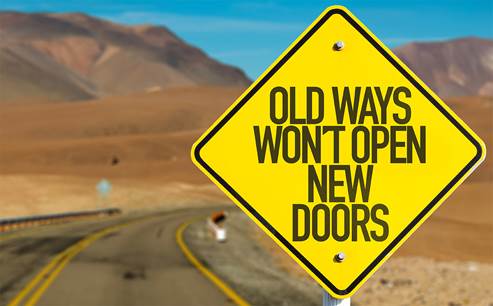
Moreover, such a consortium would also be a springboard for economic growth and employment. Build mines and all the associated infrastructure, bringing badly needed, high-paying jobs to impoverished regions of Latin America, thereby lifting people out of poverty and lessening the steady march of migrants to the US border, looking for a better life. With Monroe-lite, taken directly from the Chinese playbook on resource tie up, who needs a border wall?
Richard (Rick) Mills
subscribe to my free newsletter
Ahead of the Herd Twitter
Legal Notice / Disclaimer
Ahead of the Herd newsletter, aheadoftheherd.com, hereafter known as AOTH.
Please read the entire Disclaimer carefully before you use this website or read the newsletter. If you do not agree to all the AOTH/Richard Mills Disclaimer, do not access/read this website/newsletter/article, or any of its pages. By reading/using this AOTH/Richard Mills website/newsletter/article, and whether or not you actually read this Disclaimer, you are deemed to have accepted it.
Any AOTH/Richard Mills document is not, and should not be, construed as an offer to sell or the solicitation of an offer to purchase or subscribe for any investment.
AOTH/Richard Mills has based this document on information obtained from sources he believes to be reliable but which has not been independently verified. AOTH/Richard Mills makes no guarantee, representation or warranty and accepts no responsibility or liability as to its accuracy or completeness. Expressions of opinion are those of AOTH/Richard Mills only and are subject to change without notice. AOTH/Richard Mills assumes no warranty, liability or guarantee for the current relevance, correctness or completeness of any information provided within this Report and will not be held liable for the consequence of reliance upon any opinion or statement contained herein or any omission. Furthermore, AOTH/Richard Mills assumes no liability for any direct or indirect loss or damage or, in particular, for lost profit, which you may incur as a result of the use and existence of the information provided within this AOTH/Richard Mills Report.
AOTH/Richard Mills is not a registered broker/financial advisor and does not hold any licenses. These are solely personal thoughts and opinions about finance and/or investments – no information posted on this site is to be considered investment advice or a recommendation to do anything involving finance or money aside from performing your own due diligence and consulting with your personal registered broker/financial advisor. You agree that by reading AOTH/Richard Mills articles, you are acting at your OWN RISK. In no event should AOTH/Richard Mills liable for any direct or indirect trading losses caused by any information contained in AOTH/Richard Mills articles. Information in AOTH/Richard Mills articles is not an offer to sell or a solicitation of an offer to buy any security. AOTH/Richard Mills is not suggesting the transacting of any financial instruments but does suggest consulting your own registered broker/financial advisor with regards to any such transactions
Legal Notice / Disclaimer
Ahead of the Herd newsletter, aheadoftheherd.com, hereafter known as AOTH.Please read the entire Disclaimer carefully before you use this website or read the newsletter. If you do not agree to all the AOTH/Richard Mills Disclaimer, do not access/read this website/newsletter/article, or any of its pages. By reading/using this AOTH/Richard Mills website/newsletter/article, and whether you actually read this Disclaimer, you are deemed to have accepted it.

















